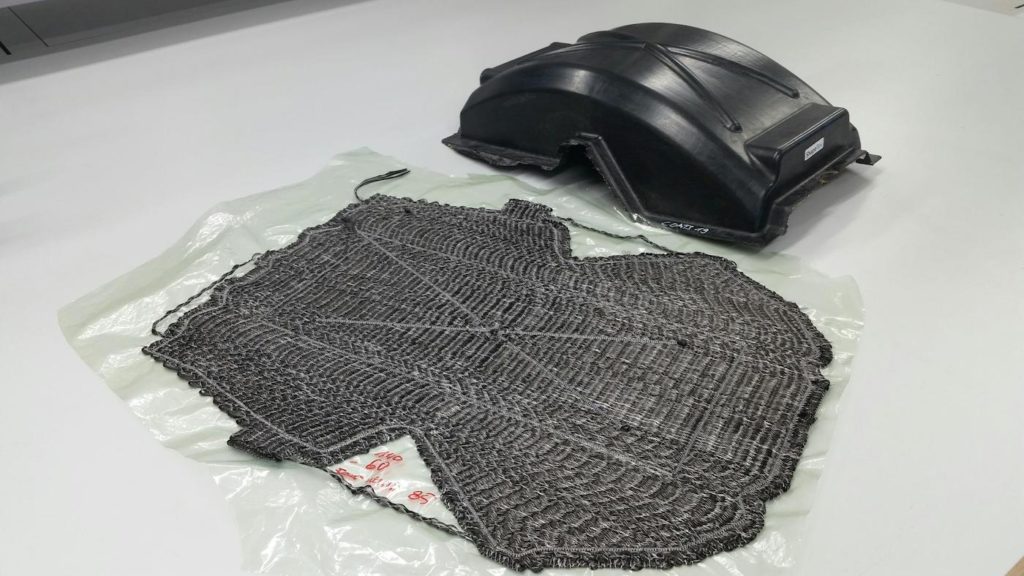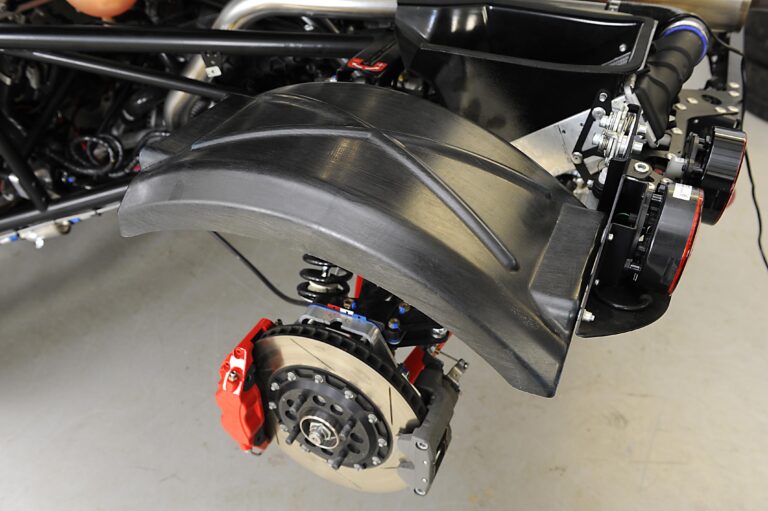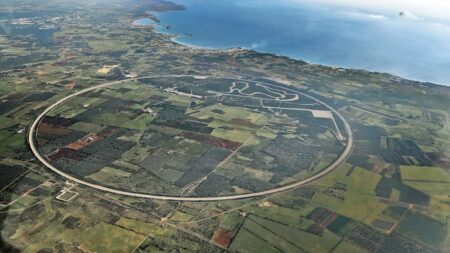Designers at the Elemental Motor Company have developed an innovative manufacturing technique that enables an increasing number of carbon composites to be used in its RP1 sports car, in areas they would previously have been ruled out for on the basis of cost and fragility. These carbon fiber components can replace heavier components to reduce weight and enhance vehicle dynamics.
The technique, named Tailored Fibre Placement (TFP), is claimed by the UK-based carmaker to create cost-effective, strong and tough carbon fiber components, with some of its success owed to recent developments by ZSK, a German manufacturer of textile and technical embroidery machines. ZSK claims that these developments will enable carbon composites to be used in many new applications.
Based on techniques used in the embroidery industry, TFP involves the laying down of carbon fiber threads or ‘rovings’ onto a substrate to make a two-dimensional preform that is ’net shaped’. ZSK says that wastage, handling and complexity are all reduced in this process, compared with conventional methods whereby layers of carbon fiber mat are cut and gradually built up by hand. TFP also enables complex 3D shapes to emerge in the mold through fiber laying and stitching whilst making the preform.

“TFP completely changed our view of how carbon composites could help to achieve weight and cost targets,” says Elemental’s composites manager, Peter Kent. “We found it created pre-forms very quickly, and is cost effective and very durable. The resulting structural rear bodywork on the Elemental RP1 is tough enough to withstand impacts such as extensive stone chips and has a complex 3D shape with compound curves. This is at odds with the traditional qualities of carbon fiber components.”
ZSK has also worked with Shape Group, a UK-based specialist in carbon composite tooling, to enable the use TFP. The company has a division dedicated to the design and manufacture of TFP components, and a boss well versed in performance vehicles.
Peter McCool, managing director of Shape Group, explained that the motivation to consider TFP came from his time as a chief designer in Formula One. “Traditional methods can be very limiting, not just in terms of design and cost, but also the properties of the material, which is brittle and not able to withstand knocks or abrasion [TFP comprises a thermoplastic resin, which does not have a brittle nature]. I felt certain there must be a better way.”
Since carbon is at its strongest in the direction of the fibers, accurate orientation is critical to creating a strong components.
“Hand laying is labor and energy intensive and open to error, and the result is often sub-optimal when considering the components’ strength,” stated McCool. “This leads to over-engineered designs with extra layers. However, TFP allows us to align the fibers precisely to optimize strength, to bear the loads present on the component, and accelerate development and manufacturing times.”
Peter Kent agrees, “We have been able to design a bodywork component with SHAPE in carbon composite using TFP which can act as a structural component, carrying bodywork and the rear luggage bins, and considerable aerodynamic forces.”

TFP is also claimed to offer benefits over conventional carbon fiber when it comes to end-of-life recycling, as the carbon can be melted out of the heated component at about 300°C and recovered, rather than going to landfill.
Kent believes that the technique is able to create a much tougher material than thermoset alternatives. “We took a component from a development car for examination, and there wasn’t a mark on it,” he stated. “At Elemental we’ve been very impressed – there are so many parts that could be made in carbon fiber using TFP. It really is very exciting.”





